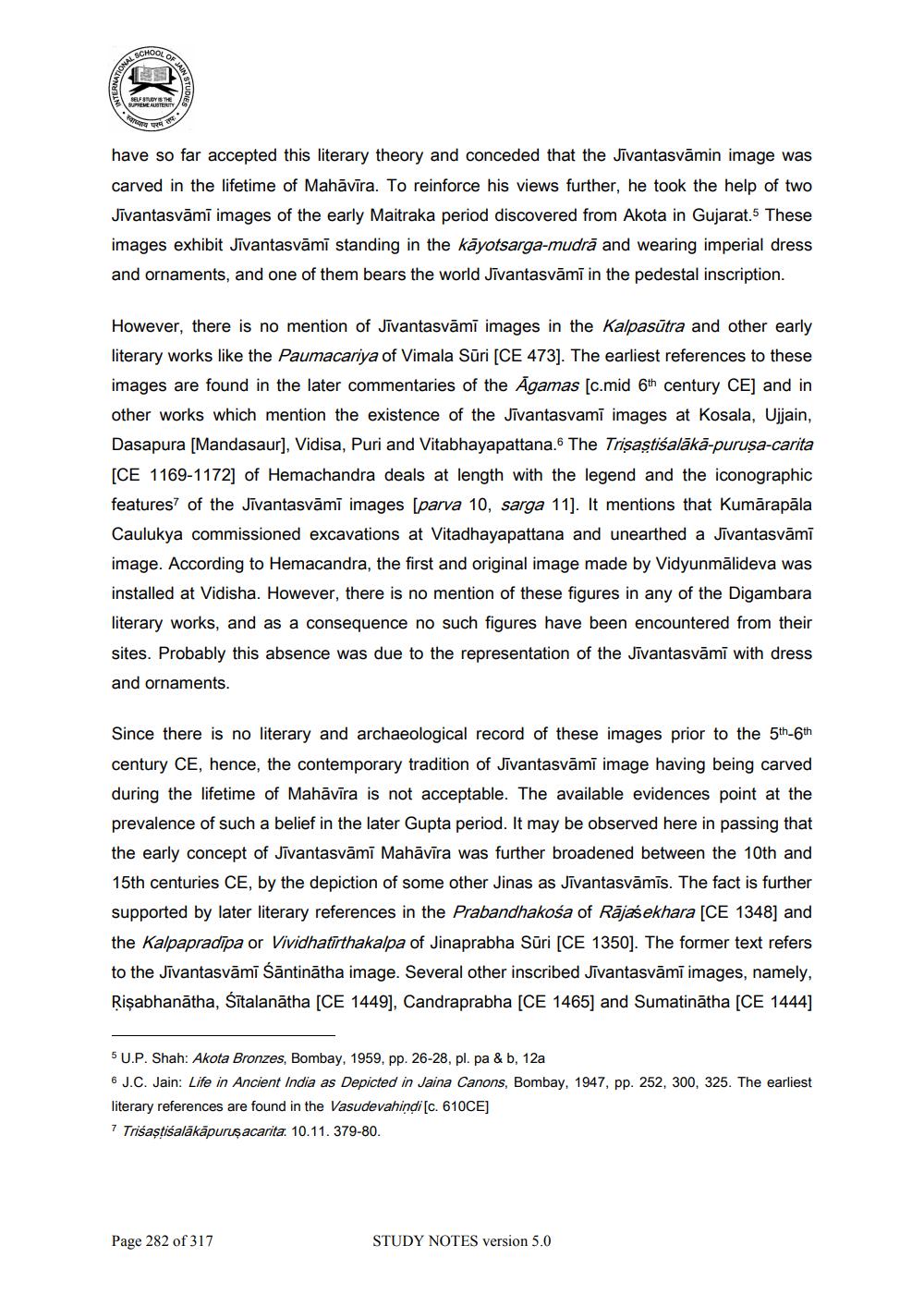________________
have so far accepted this literary theory and conceded that the Jivantasvāmin image was carved in the lifetime of Mahāvīra. To reinforce his views further, he took the help of two Jīvantasvāmī images of the early Maitraka period discovered from Akota in Gujarat.5 These images exhibit Jivantasvāmī standing in the kāyotsarga-mudrā and wearing imperial dress and ornaments, and one of them bears the world Jivantasvāmī in the pedestal inscription
However, there is no mention of Jivantasvāmī images in the Kalpasūtra and other early literary works like the Paumacariya of Vimala Sūri (CE 473]. The earliest references to these images are found in the later commentaries of the Āgamas (c.mid 6th century CE] and in other works which mention the existence of the Jīvantasvami images at Kosala, Ujjain, Dasapura [Mandasaur], Vidisa, Puri and Vitabhayapattana. The Trisastiśalākā-puruşa-carita [CE 1169-1172] of Hemachandra deals at length with the legend and the iconographic features of the Jivantasvāmī images (parva 10, sarga 11]. It mentions that Kumārapāla Caulukya commissioned excavations at Vitadhayapattana and unearthed a Jivantasvāmi image. According to Hemacandra, the first and original image made by Vidyunmālideva was installed at Vidisha. However, there is no mention of these figures in any of the Digambara literary works, and as a consequence no such figures have been encountered from their sites. Probably this absence was due to the representation of the Jivantasvāmī with dress and ornaments.
Since there is no literary and archaeological record of these images prior to the 5th-6th century CE, hence, the contemporary tradition of Jivantasvāmī image having being carved during the lifetime of Mahāvīra is not acceptable. The available evidences point at the prevalence of such a belief in the later Gupta period. It may be observed here in passing that the early concept of Jivantasvāmī Mahāvīra was further broadened between the 10th and 15th centuries CE, by the depiction of some other Jinas as Jīvantasvāmīs. The fact is further supported by later literary references in the Prabandhakośa of Rājasekhara (CE 1348) and the Kalpapradipa or Vividhatīrthakalpa of Jinaprabha Sūri [CE 1350]. The former text refers to the Jīvantasvāmi sāntinātha image. Several other inscribed jīvantasvāmī images, namely, Rişabhanātha, Sītalanātha (CE 1449], Candraprabha (CE 1465] and Sumatinātha (CE 1444]
5 U.P. Shah: Akota Bronzes, Bombay, 1959, pp. 26-28, pl. pa & b, 12a 6 J.C. Jain: Life in Ancient India as Depicted in Jaina Canons, Bombay, 1947, pp. 252, 300, 325. The earliest literary references are found in the Vasudevahindi (c. 610CE] 7 Trisastisalākāpuruşacarita: 10.11. 379-80.
Page 282 of 317
STUDY NOTES version 5.0




